What are Biometric Impulses?
A key factor of Biometric Impulses is understanding what Biometric means.
According to the United States Department of Homeland Security “Biometrics are unique physical characteristics, such as fingerprints, that can be used for automated recognition.”
Many government agencies use biometrics to level up security.
Chances are your personal cell phone has biometric reading capabilities. Popular cell phone biometrics are fingerprint scanners and facial recognition. Some cell phones can light up red when recording heart rate and oxygen levels.
The other part of the definition is understanding impulse. The body naturally and unconsciously gives off electrochemical impulses. Heart rate is measured as a pulse. A human body also gives off more subtle electrical impulses. These are needed to measure bodily functions, like muscle movement and brain activity.
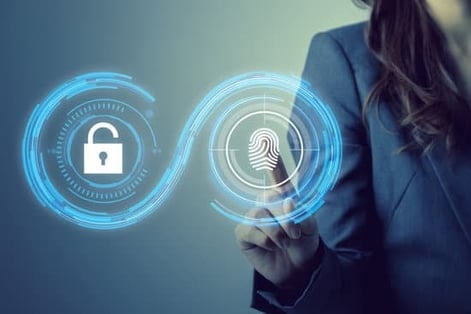
How do Biometric Impulses work?
The body starts by sending electrical impulses from the brain to neurons and then begins to send them down the spinal cord. Finally, the impulse goes through the muscle to make it move. Breaking this example down there are three main steps involved in the process.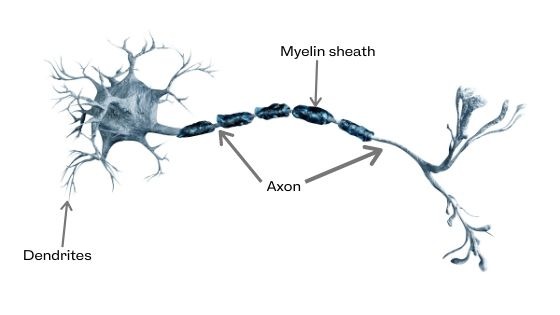
Step 1: First, there is a need for the brain to make a muscle move. One way the brain communicates with the rest of the body is by using a movement or motor neurons. This kind of neuron sits inside of the spinal cord. Outside of the motor neuron nucleus are several small nerve endings called dendrites. The dendrites are what pick up the signal from the brain.
Step 2: Secondly, the signal gets sent through the neuron. Once the information collected by the dendrites is sent to the nucleus, the message can continue its way through the neuron. This electrochemical message gets sent through the axon. Motor neurons must work fast. The axon is covered with a mix of fat and protein called the myelin sheath. Surprisingly the mixture of fat and protein is the perfect combination to speed up the time for the message to get the whole way through the axon.
Step 3: Lastly, the electrochemical message gets relayed to the end of the axon. At this point, the axon has split into multiple little ends. The message goes through a process called the synapse, pictured as the header image of this blog. The electrochemical impulse gets pushed out of the axon and pulled into muscle fibers. Once the impulse hits the muscle fibers an electrochemical reaction results in the muscle moving.
The electrochemical reaction flows the whole way through the body to the skin. Since your body is almost always moving, it is always sending electrical impulses. These electrical impulses are what gets picked up by printed electronics such as biometric sensors.
If you need more information, Khan Academy has an entire course dedicated to learning about neurons.
5 reasons why biometrics are important in everyday life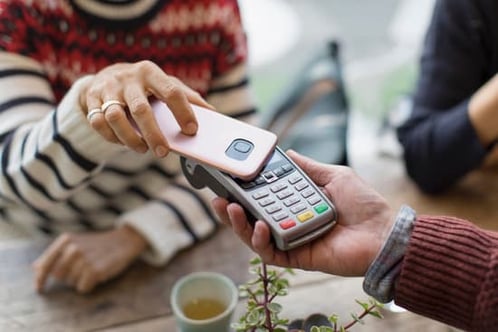
1. Personal Security
Simple biometric sensors are applied to a lot of important equipment. Fingerprint and facial recognition are the new standards for personal smartphone security. Biometric locks are common on smartphones because of their simplicity and ease of convenience. Balancing passwords can be hard, but if you let your smartphone work for you, you no longer have to remember so many passwords.
Since biometrics are personally unique there is more security in their use than that of a simple key code or short password. It is popular for many smartphones to sync credit and debit cards to payment applications. One major feature to maintain the security of the synced financial information is through the use of facial recognition. Fingerprint scanners can also be implemented onto locks on doors and on safes for added security. Through the use of basic biometrics to keep personal data personal, the world has never been safer.
Do you use Alexa or Siri? They are some of the smartest examples of speech recognition. While speech recognition is overlooked it can be another way to protect your personal information. Most of the time while setting up speech recognition software the user has to repeat themselves multiple times so the machine can learn the users’ personal voice.
2. Fire Safety Monitoring
The most important thing for any organization or business the safety of their workers. Lives can be saved by monitoring the biometrics of a fireman within a burning building. Other personnel outside of the building will be able to measure how much stress the fireman is under and be able to get them out in time.
Biometric sensors can sense stress by using algorithms in the software that compare the persons’ heart and respiratory rate with their blood oxygen levels. As the stress levels rise the wireless communication can be reinforced to the safety personnel to alert him when his stress levels are getting too high to manage.
On the other hand, by monitoring the fire safety personnel’s vitals, the outside team can know why the person is no longer responding.
Temperature sensors can also be added to the fireman’s gloves to measure when a room is too hot to enter. By adding these sensors, those who risk their lives in the building could be saved from those willing to help outside.
3. Government security
Many governments are beginning to add biometrics to passports, to avoid conflicts involving fake and counterfeit passports. Biometrics that are used in passports could involve a digital photo that could run into facial recognition software that would determine if the person on the passport is the same person trying to get through the airport.
Confidential information must remain confidential, it’s why biometrics are leading the way of security. By adding multiple biometric sensors, like fingerprints or facial recognition sensors, to confidential rooms within government offices, the chances of any unauthorized person getting into the room will be nearly eliminated.
There are many scenes in movies that show police pressing a criminal’s fingers into an ink pad then onto paper to keep in their records. Now, police can use an electronic fingerprint scanner to prove exactly who their criminal really is. The use of biometric fingerprint scanners run more efficiently and effectively. Electronic scanners are now making traditional methods obsolete.
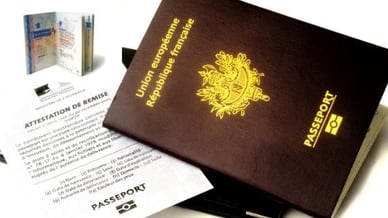
4. Sports monitoring
Imagine being able to track muscular symmetries by wearing a compression shirt with biometric sensors. Data collected from the shirt is sent straight to your smartphone. Real-time data is also important to measure how hard the athlete is working.
By combining the latest electronics with intelligent software fitness coaches can interpret the data on a smartphone or tablet and tell their athletes exactly what muscles they are over exerting and what one they need to work harder. By analyzing biometric information like breath and heart rates, it is easy for players to realize when they reached their maximum effort exertion, and when they may need to take a break.
Today’s technology allows a compression shirt with printed sensors that wirelessly connect to an app on the user’s smartphone. The dry electrodes can pick up specific data that the athlete or coach to use to fine-tune their training efforts.
Those that want to lose weight by themselves can now use biometric sensing as their coach to realize what intensity they need to work out in order to burn the most calories. The software can be designed to easily track personal progress over time. There are scales on the market that can link to smartphones to track vitals like weight, bone density, and water levels. Smart scales like this use biometric impulses from the user’s bare feet.

5. Medical Monitoring
Printed biometric sensors are opening a whole new way of monitoring vital signs of patients. Traditionally, medical professionals use bulky wires that keep patients “stuck” to the machine. Biometric sensors can collect data from muscle and brain activity, wirelessly. They can be added directly to a compression sleeve to wirelessly monitor any electrochemical messages coming from the body.
Biometric sensors are revolutionizing at-home monitoring. Temperature, heart and breath rates can be tracked remotely. This allows low-risk patients to go home sooner while tracking health vital signs in the comfort of their own home. The medical data can be wirelessly transmitted to a home network and the doctors’ can monitor results from hundreds of miles away. By monitoring health vitals, doctors would be instantly alerted of any complications and instruct the patient of the next steps.
Technology Impulses?
Have you ever received an electronic stimulation (e-stim) or TENS treatments? If the answer is yes, then you most likely used the traditional electrodes that include gel and wires. Today’s technology can allow for no wires or gels to be used in e-stim treatments. These treatments rely on sending electricity into the body, opposite of a biometric impulse. Most of the time, people using e-stim or TENS treatments are doing so to relieve pain. Depending on the treatment, there are different ways to trigger nerve or muscle pain. There are also different levels of stimulation available for each treatment. Usually, these treatments use a low voltage electronic current that some users can hardly feel.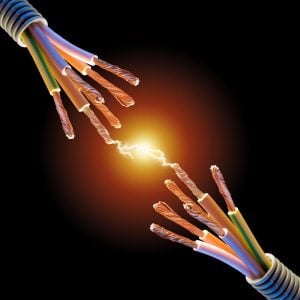
E-stim works by sending very small electrical impulses into the muscles. By targeting the specific muscles needed, the treatment can have different effects for the users. Many people use this treatment to target an area of specific muscle pain. The electricity can help stimulate the muscle and assist the body’s natural healing process. Other people, specifically athletes, use this treatment to help gain muscle.
TENS, or Transcutaneous Electrical Nerve Stimulation, could be another way to treat chronic pain. Electricity from TENS treatments targets the nerves to alleviate pain. Common uses of TENS treatments are for back pain or neck pain. Many of the body’s nerves sit in the spinal cord. When an area around your spine is hurting it is popular for doctors to use a TENS treatment first because the area affected is full of nerves, and not muscles.
Wrap it up
Biometric impulses used to be hard to understand. In three simple steps, the dendrites of a motor neuron pick up a signal from the brain. Then the information gets sent through the rest of the neuron to the axon. Lastly, the information is sent from the axon to muscle fiber. Once this message hits the muscle fibers the electrochemical reaction results in the movement of the muscle. Technology can sense this biometric impulse to create a reaction. The use of biometrics is a critical part of safety in today’s advanced world of technology.
Meet the Author

Ashley Foster is a graduate of Slippery Rock University, where she earned her Bachelor’s degree in Business Administration, majored in Business Management and minored in Marketing. While Ashley was studying at SRU she found a passion for marketing. Although she is busy working, she spends her free time traveling and hiking with friends. She is also a volunteer for the American Marketing Association, Pittsburgh Chapter, and an active alumni member of FCCLA.